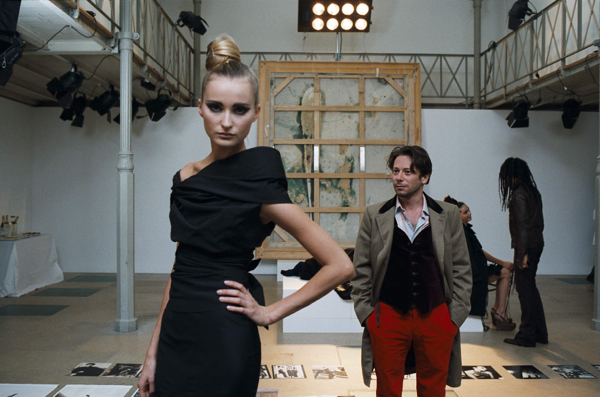Movie review by Greg Carlson
Academy Award nominee Julian Schnabel makes films that often focus intensely on the trials of a reflective (some would say self-obsessed) male protagonist. “The Diving Bell and the Butterfly,” adapted from French “Elle” editor Jean-Dominique Bauby’s 1997 memoir, follows Schnabel’s previous two features, “Basquiat” and “Before Night Falls,” in such a manner, fixating on a person who sees the world with a particular and idiosyncratic vision. Bauby suffered a massive and virtually completely paralyzing stroke in 1995, and the result left him bedridden and totally dependent on the care of others. He was able to control the muscles of just one of his eyelids, and eventually dictated his thoughts through blinks that corresponded with letters of the alphabet.
Schnabel depicts a great deal of the film’s action from the first person point of view of the incapacitated Bauby, played effectively by Mathieu Amalric. Working closely with ace cinematographer Janusz Kaminski, Schnabel labors to bring the viewer inside Bauby’s so-called “locked-in syndrome,” which approximates the sensation of being buried alive. The arresting opening sections of the film shift in and out of focus along with Bauby’s consciousness. Double exposures, shifts in light, and rapid fades to and from black share the limitations of Bauby’s post-trauma. In one highly stylized shot, the audience witnesses the sewing shut of Bauby’s eyelid from his vantage point. The moment is not for the squeamish.
Schnabel’s training as a painter lends the proceedings a self-conscious artiness, but the purposefulness of the sequencing, which replicates Bauby’s snail-paced cycle of days, often sucks the air out of the film and leaves viewers in want of something meatier to chew over. Schnabel might have desired to excise the risk for melodrama inherent in a showdown between Bauby’s mistress and the mother of his kids, but he lacks the skill of a Bresson, and doesn’t quite pull it off. Instead of approaching transcendence by withholding necessary scenes, “The Diving Bell and the Butterfly” is more apt to make us wonder where the key interactions went.
Amalric, who spends most of the movie with his face frozen in a droopy-lipped mask, is a terrific actor, and Schnabel fortunately includes scenes of Bauby’s memories, (including a vacation to Lourdes with a pious lover) which give the performer an opportunity to move around. The supporting cast is strong, and Max Von Sydow is every bit his legendary self as Bauby’s nonagenarian father, dominating the screen in a pair of excellent scenes.
Some viewers might feel that Schnabel holds Bauby at too great a distance, refusing sentiment in order to sidestep the traps that would plunge the movie into the realm of the maudlin. Not surprisingly, the film crackles to life when Schnabel assembles certain abstractions; the opening and closing credits, designed by the director, are expressive bookends. In the former, titles are layered with close-ups of milky x-rays. The latter shows a montage of massive shelves of ice reattaching themselves to glaciers as the film is run in reverse motion. It is a beautiful and startling effect.
